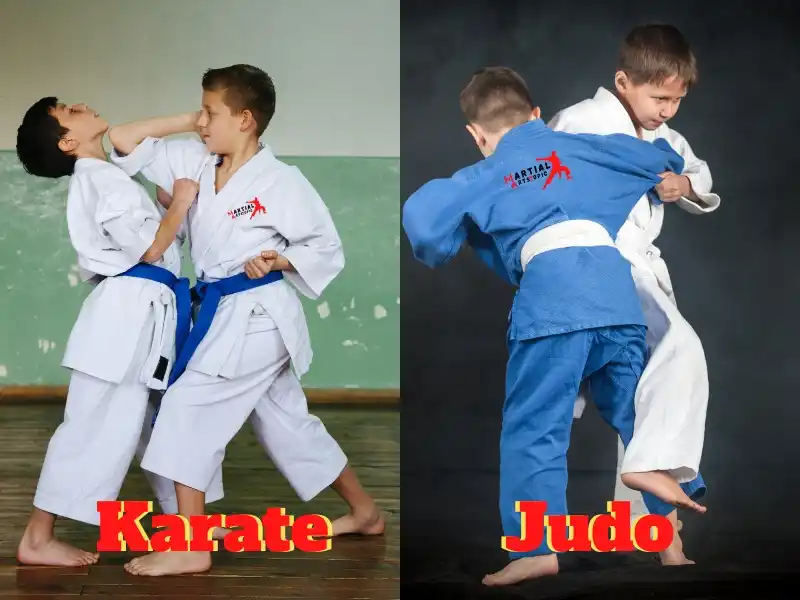
Karate and Judo: Unveiling the Differences and Similarities in these Martial Arts
Karate and Judo are two of the most popular and widely practiced martial arts in the world. Both disciplines have their own unique techniques, philosophies, and training methods, making them distinct yet equally fascinating. The key differences and similarities between Karate and Judo, shedding light on their respective histories, techniques, and philosophies.
Karate: The Way of the Empty Hand
Karate, which originated in Okinawa, Japan, is renowned for its striking techniques, including punches, kicks, knee strikes, and elbow strikes. The primary focus of Karate is on self-defense and the development of physical and mental discipline. Practitioners of Karate, known as karateka, strive to achieve balance, speed, and power in their movements through rigorous training and kata (forms) practice.
Judo: The Gentle Way
On the other hand, Judo, developed by Jigoro Kano in Japan, is characterized by its emphasis on throwing, grappling, and submission techniques. Unlike Karate, which primarily focuses on striking, Judo places a strong emphasis on leverage and technique, allowing practitioners to overcome larger and stronger opponents through skillful execution of throws and joint locks. Judo practitioners, known as judoka, also engage in groundwork (ne-waza) and randori (sparring) to hone their skills and develop resilience.
Key Differences
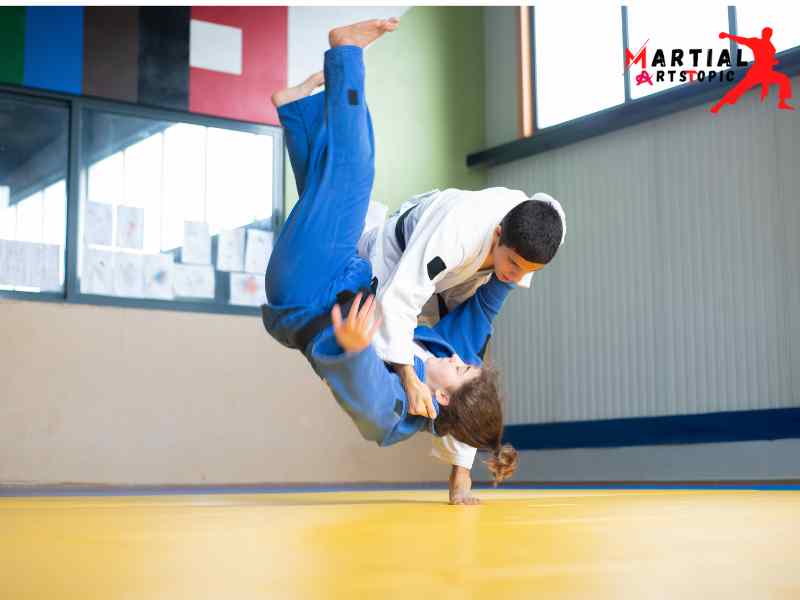
One of the fundamental differences between Karate and Judo lies in their primary techniques. Karate emphasizes striking techniques, while Judo focuses on throwing and grappling. Additionally, Karate places a strong emphasis on kata practice and striking drills, whereas Judo prioritizes randori and groundwork techniques.
Another significant difference is the competitive aspect of the two martial arts. Judo has a strong competitive component, with practitioners engaging in tournaments and matches governed by strict rules. In contrast, while Karate also has a competitive element, it often places greater emphasis on traditional forms and kata performance.
Notable Similarities
Despite their differences, Karate and Judo share some common ground. Both disciplines place a strong emphasis on discipline, respect, and self-improvement. Additionally, both Karate and Judo have been instrumental in promoting physical fitness, mental resilience, and character development among practitioners.
What is Karate?
Karate is a traditional Japanese martial art that focuses on striking techniques using punches, kicks, knee strikes, and elbow strikes. It also emphasizes proper breathing and body movement to generate power and speed. Karate practitioners, known as karateka, train in katas (pre-arranged forms) and kumite (sparring) to develop self-discipline, confidence, and physical fitness. The practice of karate promotes mental focus, balance, and agility, making it a valuable skill for self-defense and personal development. Karate is often described as a way of life, emphasizing respect, humility, and continual improvement. If you’re looking to embark on a journey of self-discovery and physical mastery, karate offers a rich and rewarding path.
What is judo?
Judo is a modern Japanese martial art and combat sport that focuses on grappling and throwing techniques. Jigoro Kano found it in the late 19th century and has since developed into a popular form of self-defense and physical fitness. Judo emphasizes the use of an opponent’s strength and momentum to gain leverage and control, making it an ideal martial art for individuals of all ages and sizes. The practice of judo also promotes mental discipline, respect, and self-confidence, making it a holistic form of martial arts training. Whether you’re looking to improve your self-defense skills, physical fitness, or mental fortitude, judo offers a well-rounded approach to personal development.
History and Origins
The history and origins of Karate and Judo are rich with tradition and evolution. Karate, originating from Okinawa, Japan, is a striking martial art that emphasizes powerful punches, kicks, and blocks. On the other hand, Judo, developed in Japan by Jigoro Kano, focuses on grappling techniques and throws. While Karate has roots in Chinese martial arts, Judo is heavily influenced by traditional Japanese jiu-jitsu. Both disciplines have spread globally and have become popular forms of self-defense and competitive sports. The comparison of Karate vs Judo showcases the diverse paths and philosophies that have shaped these martial arts into what they are today.
Origins of Karate
Karate, which originated in Okinawa, Japan, has a rich history steeped in tradition and discipline. The art of karate is believed to have been influenced by Chinese martial arts and was developed as a means of self-defense. Over time, karate evolved into a system of physical, mental, and spiritual training, emphasizing the importance of respect, humility, and self-improvement. The word “karate” itself means “empty hand,” highlighting its focus on unarmed combat techniques. As the practice of karate spread beyond Japan, it gained popularity worldwide, becoming synonymous with strength, agility, and mental fortitude. Today, karate remains a respected and widely practiced martial art, deeply rooted in its historical origins and revered for its enduring principles.
Founder and Historical Background
Karate, which originated in the Ryukyu Kingdom (present-day Okinawa, Japan), has a history that dates back centuries. The art of Karate is deeply rooted in the cultural exchange between the Ryukyu Kingdom and China. It was during this period of exchange that the foundational elements of what we now know as Karate began to take shape.
One of the most influential figures in the history of Karate is Gichin Funakoshi. Born in 1868, Funakoshi is often credited as the father of modern Karate. He was instrumental in introducing and popularizing Karate on the main islands of Japan and eventually worldwide. Funakoshi’s teachings emphasized not only the physical techniques of Karate but also its mental and philosophical aspects, promoting the development of character and self-discipline.
Key Principles and Techniques
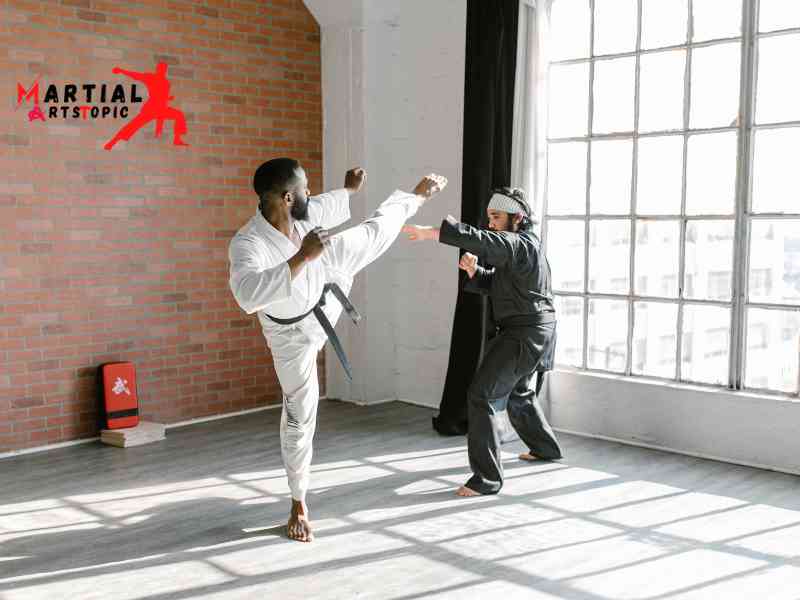
Its emphasis characterizes karate on striking techniques such as punching, kicking, knee and elbow strikes, and open-hand techniques. The art also incorporates various blocking, grappling, and throwing techniques. These techniques are honed through rigorous training, which includes kihon (basic techniques), kata (forms or patterns of movement), and kumite (sparring).
Central to the practice of Karate are its key principles, which include discipline, respect, humility, perseverance, and self-control. Practitioners of Karate strive not only to develop physical strength and skill but also to cultivate a strong and disciplined mind.
The philosophy of Karate extends beyond the physical techniques, emphasizing the attainment of inner peace and harmony. Through dedicated practice, individuals can learn to harness their energy and focus, enabling them to face life’s challenges with resilience and determination.
As we explore the history and origins of Karate, it becomes evident that this martial art is not merely combat but a way of life—a path to self-improvement and personal growth.
Origins of Judo
Judo, a Japanese martial art, has a rich history and fascinating origins. Developed by Jigoro Kano in the late 19th century, Judo is a combination of various traditional Japanese martial arts. The word “Judo” itself can be translated to mean “gentle way,” emphasizing the art’s focus on using an opponent’s energy against them. Throughout its history, Judo has developed from a self-defense and combat technique into an international sport with its own unique philosophy and principles. Understanding the history and origins of Judo provides valuable insight into the art’s development and its enduring significance in the modern world.
Founder and Historical Background
Jigoro Kano developed judo in 1882. Kano, a martial arts enthusiast, sought to create a discipline that focused on the concept of maximum efficiency with minimal effort. He drew inspiration from various traditional Japanese jujutsu techniques and philosophies, eventually formulating judo as a distinct martial art.
Kano’s vision for judo was not solely centered on combat techniques but also emphasized mental and moral development. He established the Kodokan, which served as the epicenter for judo training and education. Under Kano’s guidance, judo flourished and gained widespread popularity both in Japan and internationally.
Key Principles and Techniques
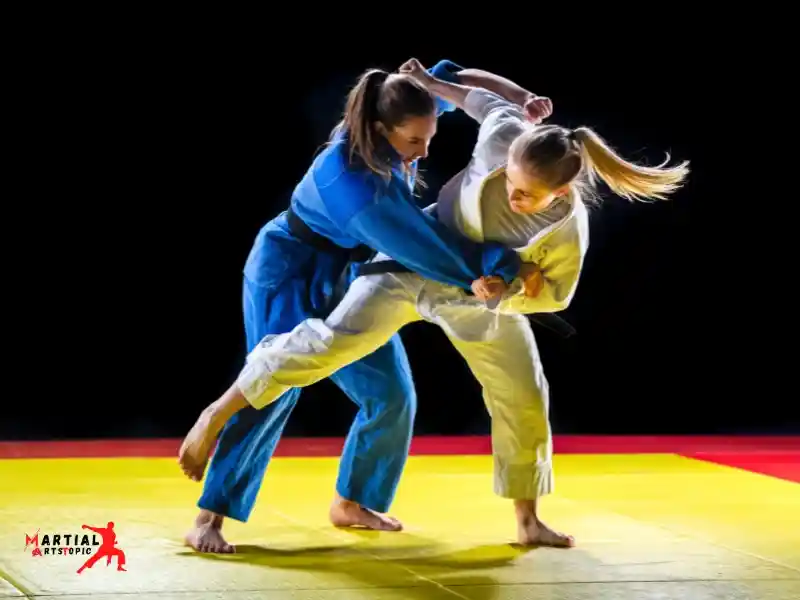
The essence of judo lies in its fundamental principles, which emphasize balance, leverage, and the ability to adapt to an opponent’s movements. Judo practitioners, known as judoka, are trained to use an opponent’s energy and strength against them, thereby achieving victory through skillful application of techniques rather than sheer force.
The core principles of judo, often referred to as “maximum efficiency” and “mutual welfare and benefit,” underscore the art’s emphasis on utilizing minimal effort to achieve the greatest effect and promoting mutual respect and cooperation among practitioners.
In techniques, judo encompasses an array of throws, grappling, and submission holds. Throws, or “nage-waza,” are executed with the objective of off-balancing and ultimately throwing an opponent to the ground. Grappling techniques, known as “katame-waza,” involve controlling an opponent on the ground through pins, joint locks, and chokeholds.
Techniques and Movements
Karate is a martial art that has captivated people around the world with its dynamic techniques and powerful movements. Whether you are a beginner looking to learn the basics or an experienced practitioner seeking to refine your skills, understanding the fundamental techniques and movements of karate is essential.
Basic Karate Techniques
Karate is renowned for its emphasis on striking techniques, which are executed with precision, speed, and power. Some of the basic striking techniques in karate include punches, kicks, and strikes using the elbows and knees. These techniques are designed to efficiently target vital points on the opponent’s body, maximizing their impact and effectiveness.
- Punches: Karate punches are delivered with a straight, focused motion, utilizing the entire body to generate power. The fundamental punches in karate include the jab, reverse punch, and uppercut, each serving a specific purpose in combat or training.
- Kicks: Their explosive speed and flexibility characterizes karate kicks. Front kicks, roundhouse kicks, side kicks, and back kicks are among the fundamental kicks in karate, each requiring a combination of balance, agility, and strength.
- Blocks: Besides striking techniques, karate places a strong emphasis on defensive maneuvers, known as blocks. Blocks are used to deflect or neutralize incoming attacks, showcasing the defensive aspect of karate training.
- Stances: Stances form the foundation of karate movements, providing stability, agility, and a solid base for executing techniques. Common stances in karate include the front stance, back stance, and horse stance, each serving specific purposes in different situations.
Key Principles of Karate Movements
Besides mastering specific techniques, understanding the underlying principles of karate movements is crucial for developing a well-rounded skill set. Some of the key principles of karate movements include:
- Breathing: Proper breathing techniques are essential in karate, as they help to generate power, maintain focus, and control energy flow during training and combat. Practicing synchronized breathing with movements is a hallmark of karate training.
- Body Mechanics: Karate movements are rooted in efficient body mechanics, emphasizing the use of the entire body to generate power and speed. Understanding how to utilize hip rotation, proper alignment, and weight transfer is critical for executing techniques effectively.
- Focus and Concentration: Karate training cultivates mental discipline, requiring practitioners to maintain unwavering focus and concentration during practice. This mental aspect is integral to the execution of precise and powerful movements.
- Fluidity and Precision: Fluid characterizes karate movements, seamless transitions between techniques, combined with precise and controlled execution. Developing a sense of flow and precision in movements is a hallmark of advanced karate practice.
judo Techniques and Movements
The Art of Balance and Control welcome, judo enthusiasts! Whether you’re a seasoned judoka or just starting out on your martial arts journey, the art of judo offers a rich tapestry of techniques and movements to explore. The fascinating world of judo, covering everything from fundamental throws to advanced grappling techniques. So, grab your gi and get ready to deepen your understanding of this dynamic martial art.
Fundamental Judo Techniques: Building a Strong Foundation
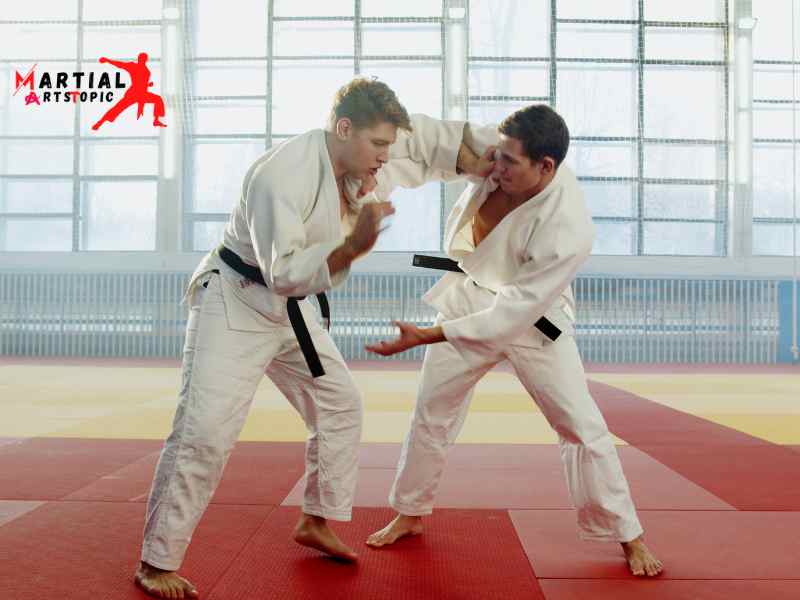
At the core of judo lie fundamental techniques that form the building blocks of the art. These techniques emphasize balance, leverage, and efficient movement, allowing practitioners to overcome larger and stronger opponents through skillful execution. Among the essential techniques are:
- Osoto Gari (Major Outer Reap): This classic judo throw involves sweeping your opponent’s leg to disrupt their balance and execute a controlled takedown.
- Ouchi Gari (Major Inner Reap): With this technique, judokas use a swift inner reap to unbalance their opponent and execute a seamless throw.
- Tai Otoshi (Body Drop): Tai Otoshi showcases the art of using your body’s movement to redirect and unbalance your opponent, leading to a decisive takedown.
- Seoi Nage (Shoulder Throw): A staple of judo, Seoi Nage leverages the judoka’s shoulder to execute a powerful throw, capitalizing on the opponent’s momentum.
These fundamental techniques serve as the cornerstone of a judoka’s skill set, fostering a deep understanding of balance, timing, and precision.
Advanced Judo Movements: Elevating Your Practice
As practitioners progress in their judo journey, they can explore more advanced movements that demand heightened agility, adaptability, and strategic prowess. These movements include:
- Uchi Mata (Inner Thigh Throw): Uchi Mata showcases the art of using the inner thigh to execute a dynamic throw, requiring expert timing and finesse.
- Harai Goshi (Sweeping Hip Throw): This technique involves using sweeping hip movements to unbalance and throw the opponent, showcasing fluidity and precision.
- Juji Gatame (Cross Armlock): Transitioning to the ground, judokas can employ Juji Gatame to immobilize and control their opponents through a precise armlock technique.
- Sode Tsurikomi Goshi (Sleeve Lifting Pulling Hip Throw): This advanced throw emphasizes the use of sleeve grips and hip movement to execute a powerful and controlled throw.
Karate vs Judo: Training and Philosophy
When it comes to the debate of Karate vs Judo, it’s essential to understand the unique training tips and philosophy behind each martial art. Karate, known for its striking techniques and emphasis on self-defense, focuses on developing speed, power, and precision. On the other hand, Judo places a strong emphasis on throws, takedowns, and grappling techniques, prioritizing leverage and technique over brute strength. Both martial arts have their own philosophies and principles that contribute to personal growth and self-discipline. Whether you’re drawn to the striking prowess of Karate or the grappling expertise of Judo, each offers valuable training tips and a rich philosophical foundation that can benefit practitioners in various aspects of life.
Training Tips for Karate Practitioners
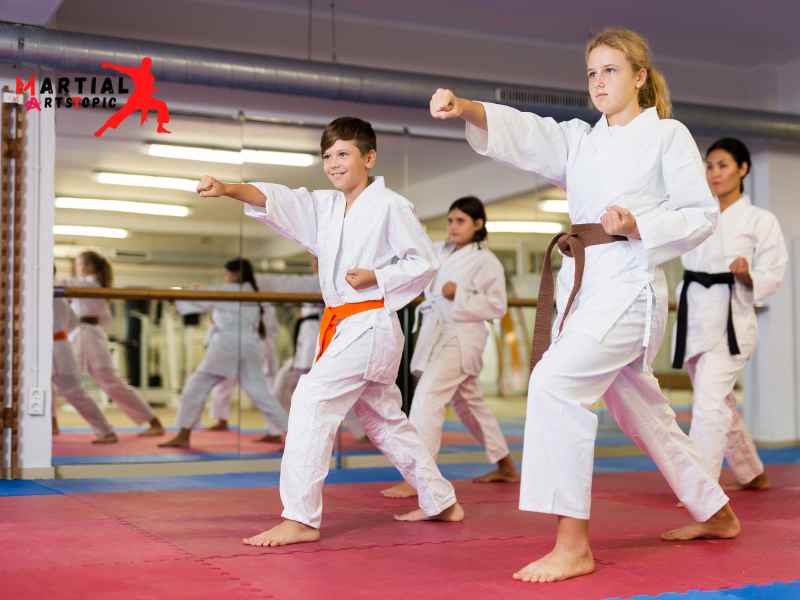
- Practice Regularly: Consistent practice is key to mastering Karate. Set aside dedicated time for training and stick to a routine that works for you.
- Focus on Fundamentals: Mastering the basics is crucial for advancing in Karate. Pay attention to stances, footwork, and proper execution of techniques.
- Strength and Flexibility: Incorporate strength and flexibility training into your regimen to improve your overall performance and reduce the risk of injuries.
- Mental Conditioning: Mental fortitude is just as important as physical strength in Karate. Develop focus, determination, and resilience through mindfulness and meditation practices.
- Partner Drills: Engage in partner drills to sharpen your techniques, timing, and sparring skills. Training with a partner provides valuable feedback and challenges you to adapt to different styles.
Karate Philosophy: Beyond the Physical Aspects
- Discipline and Respect: Karate instills discipline and respect for oneself and others. Embrace the etiquette and traditions of Karate to cultivate a respectful and disciplined mindset.
- Self-Improvement: The philosophy of Karate emphasizes continuous self-improvement. Set personal goals, and strive to surpass your own limits with each training session.
- Control and Restraint: Karate teaches practitioners to exhibit control and restraint, both in training and in daily life. Learn to harness your power without unnecessary aggression.
- Harmony of Body and Mind: Achieving harmony between the body and mind is a fundamental principle of Karate philosophy. Cultivate a balanced approach to training that nurtures both physical and mental well-being.
- Perseverance and Resilience: In the face of challenges, Karate encourages practitioners to persevere and develop resilience. Embrace setbacks as opportunities for growth and refinement.
Training Tips for Judo
- Focus on Fundamentals: No matter how advanced you become, never underestimate the importance of mastering the fundamental techniques of judo. Practice your throws, pins, and groundwork diligently to build a firm foundation.
- Embrace Repetition: Repetition is key to honing your skills in judo. Embrace the concept of “shu ha ri,” which emphasizes the stages of learning: following, detaching, and transcending. Through repetition, you’ll progress from following the techniques as taught, to detaching from strict adherence, and ultimately transcending to a higher level of mastery.
- Mental Conditioning: Judo is as much a mental game as it is a physical one. Train your mind to stay calm and focused during intense sparring sessions and competitions. Cultivate mental resilience and adaptability to overcome challenges on the tatami.
- Cross-Train for Strength and Flexibility: Supplement your judo training with strength and flexibility exercises. A strong and flexible body is essential for executing powerful throws and avoiding injuries.
- Learn from Every Encounter: Approach each training session and competition as an opportunity to learn. Analyze your successes and failures, and use them to refine your techniques and strategy.
Philosophy of Judo
Judo’s philosophy extends far beyond the physical techniques. It encompasses principles of respect, humility, and mutual benefit. Here are some key philosophical tenets of judo:
- Seiryoku Zen’yo (Maximum Efficiency): Judo teaches practitioners to use their energy and resources effectively. By harnessing the principles of leverage and timing, a judoka can overcome a physically stronger opponent.
- Jita Kyoei (Mutual Welfare and Benefit): This principle emphasizes the importance of practicing judo for the mutual benefit and welfare of all individuals. It promotes the idea of cooperation and harmony, both on and off the mat.
- Mudo (The Way of Gentleness): The concept of “ju” or gentleness in judo emphasizes the use of suppleness and flexibility to control an opponent’s force. It’s about yielding to overcome, rather than meeting force with force.
- Personal Development: Judo is not just about winning matches; it’s about personal growth and development. The discipline, perseverance, and self-control cultivated through judo practice extend into all aspects of life.
Benefits of Karate vs Judo
Karate and Judo offer unique benefits for practitioners. Karate focuses on striking techniques, promoting physical fitness, flexibility, and mental discipline. On the other hand, Judo emphasizes throws, joint locks, and grappling, fostering agility, balance, and strategic thinking. Both martial arts provide effective self-defense skills and promote overall well-being. While Karate enhances striking power and speed, Judo emphasizes leverage and technique. Ultimately, the choice between Karate and Judo depends on individual preferences, goals, and interests. Whether you prefer the dynamic strikes of Karate or the fluid throws of Judo, both disciplines offer valuable physical and mental rewards.
Benefits of karate
- Physical Fitness: Karate training involves a variety of cardiovascular exercises, strength training, and flexibility drills. As a result, practitioners experience improved stamina, agility, and overall physical conditioning.
- Self-Defense Skills: Learning karate equips you with practical self-defense techniques that can be invaluable in real-life situations. By mastering striking, blocking, and grappling techniques, you can enhance your ability to protect yourself and others.
- Discipline and Focus: The structured nature of karate training instills discipline and focus in practitioners. Through the repetition of techniques and adherence to dojo etiquette, students develop mental fortitude and the ability to concentrate on tasks.
- Confidence and Self-Esteem: As you progress in your karate journey, you’ll gain confidence in your abilities and a sense of accomplishment with each new belt rank achieved. This boost in self-esteem can positively affect various areas of your life.
- Stress Relief: Engaging in karate provides an outlet for stress and tension. The physical exertion and mental concentration involved in training can help alleviate daily pressures and promote a sense of calm.
- Respect and Humility: Traditional karate values emphasize respect for others and humility. Practitioners learn to treat their instructors, peers, and opponents with respect, fostering a culture of mutual esteem and cooperation.
- Community and Camaraderie: Joining a karate dojo introduces you to a supportive community of like-minded individuals. The camaraderie and mutual encouragement within the dojo create a positive and motivating environment.
- Coordination and Balance: Karate techniques require precise coordination and balance, leading to improvements in overall motor skills and body awareness.
- Goal Setting and Achievement: The belt ranking system in karate provides a clear progression framework, allowing students to set and achieve specific goals as they advance through the ranks.
- Lifetime Learning: Karate is a lifelong journey of learning and self-improvement. It offers endless opportunities for growth, both physically and mentally, regardless of age or experience level.
Benefits of judo
- Physical Fitness: Judo is a full-body workout that promotes strength, flexibility, and cardiovascular endurance. The dynamic movements and techniques involved in judo training engage multiple muscle groups, leading to improved overall fitness.
- Self-Defense Skills: Learning judo equips individuals with practical self-defense techniques that can be applied in real-life situations. By mastering throws, holds, and grappling techniques, practitioners gain the confidence and ability to defend themselves effectively.
- Mental Discipline: Judo emphasizes mental discipline, focus, and resilience. Practitioners learn to remain calm under pressure, strategize their moves, and develop a strong sense of determination. These mental skills cultivated through judo training can be applied to various aspects of life.
- Improved Coordination and Balance: Judo requires precise coordination and balance, which are honed through consistent practice. As a result, practitioners develop better spatial awareness, agility, and coordination, which can benefit them in other physical activities and daily tasks.
- Increased Self-Confidence: Through progression and mastery of judo techniques, practitioners experience a boost in self-confidence and self-esteem. Overcoming challenges and achieving goals within the martial art instills a sense of accomplishment and empowerment.
- Stress Relief: Engaging in judo training provides an outlet for releasing stress and tension. The focus required during practice helps individuals to temporarily set aside their worries and focus on the present moment, promoting mental relaxation.
- Social Interaction and Community: Judo training often takes place in a supportive and inclusive community environment. Practitioners can build strong friendships, develop mutual respect, and learn from a diverse group of individuals.
- Injury Prevention and Rehabilitation: Judo training can contribute to injury prevention by strengthening muscles, improving flexibility, and promoting proper body mechanics. Additionally, it can aid in the rehabilitation process for individuals recovering from certain injuries.
- Overall Well-Being: The holistic nature of judo training positively affects overall well-being, encompassing physical, mental, and emotional aspects. Practicing judo can contribute to a healthier lifestyle and a more positive outlook on life.
Karate or Judo: Which Martial Art Suits You Best?

Karate and Judo are two of the most popular martial arts practiced around the world. Both have their unique techniques, philosophies, and benefits. Whether you’re considering learning a new martial art or are simply curious about the differences between the two, Karate and Judo differ significantly in their origins, techniques, and philosophies. Let’s explore the key differences and benefits of each martial art to help you make an informed decision.
Karate
Karate originated in Okinawa and is known for its striking techniques, including punches, kicks, knee strikes, and elbow strikes. It emphasizes powerful, linear movements and is often practiced for self-defense and physical fitness. Karate training involves katas (patterns of movements) and sparring, focusing on developing speed, strength, and coordination.
Judo
Judo, on the other hand, originated in Japan and is a grappling-based martial art. It emphasizes throws, takedowns, and ground control techniques. Judo also incorporates joint locks and chokeholds, making it effective for self-defense and competitive sports. Judo training involves randori (sparring) and the practice of throwing and grappling techniques.
Choosing the Right Martial Art
In choosing between Karate and Judo, it’s important to consider your personal interests and goals. Karate is known for its striking techniques, emphasizing powerful punches, kicks, and blocks. On the other hand, Judo focuses on throws, joint locks, and grappling techniques. If you’re looking to improve your overall fitness, flexibility, and striking abilities, Karate might be the right choice for you. However, if you’re more interested in learning self-defense through throws, takedowns, and ground fighting, Judo could be the perfect fit. Ultimately, both martial arts offer unique benefits, so it’s worth trying out classes for each to see which one resonates with you the most. Keep in mind that both Karate and Judo require dedication, discipline, and perseverance to master, so choose the one that aligns with your interests and lifestyle.
Which One Suits You Best?
Choosing between Karate and Judo depends on your personal preferences, fitness goals, and interests. If you are interested in striking techniques and want to improve your overall physical fitness and flexibility, Karate might be the right choice for you. On the other hand, if you prefer grappling and want to learn effective self-defense techniques that emphasize leverage and technique over brute strength, Judo could be the perfect fit.
Conclusion
Karate vs Judo are incredible martial arts with unique techniques and philosophies. Whether you’re drawn to the striking and self-defense aspects of Karate or the grappling and throwing techniques of Judo, both disciplines offer a wealth of physical and mental benefits. Ultimately, the choice between Karate and Judo comes down to personal preference, goals, and individual strengths. Whichever path you choose, remember that dedication, discipline, and respect are the cornerstones of martial arts practice. Embrace the journey and continue to grow both as a martial artist and as a person.
